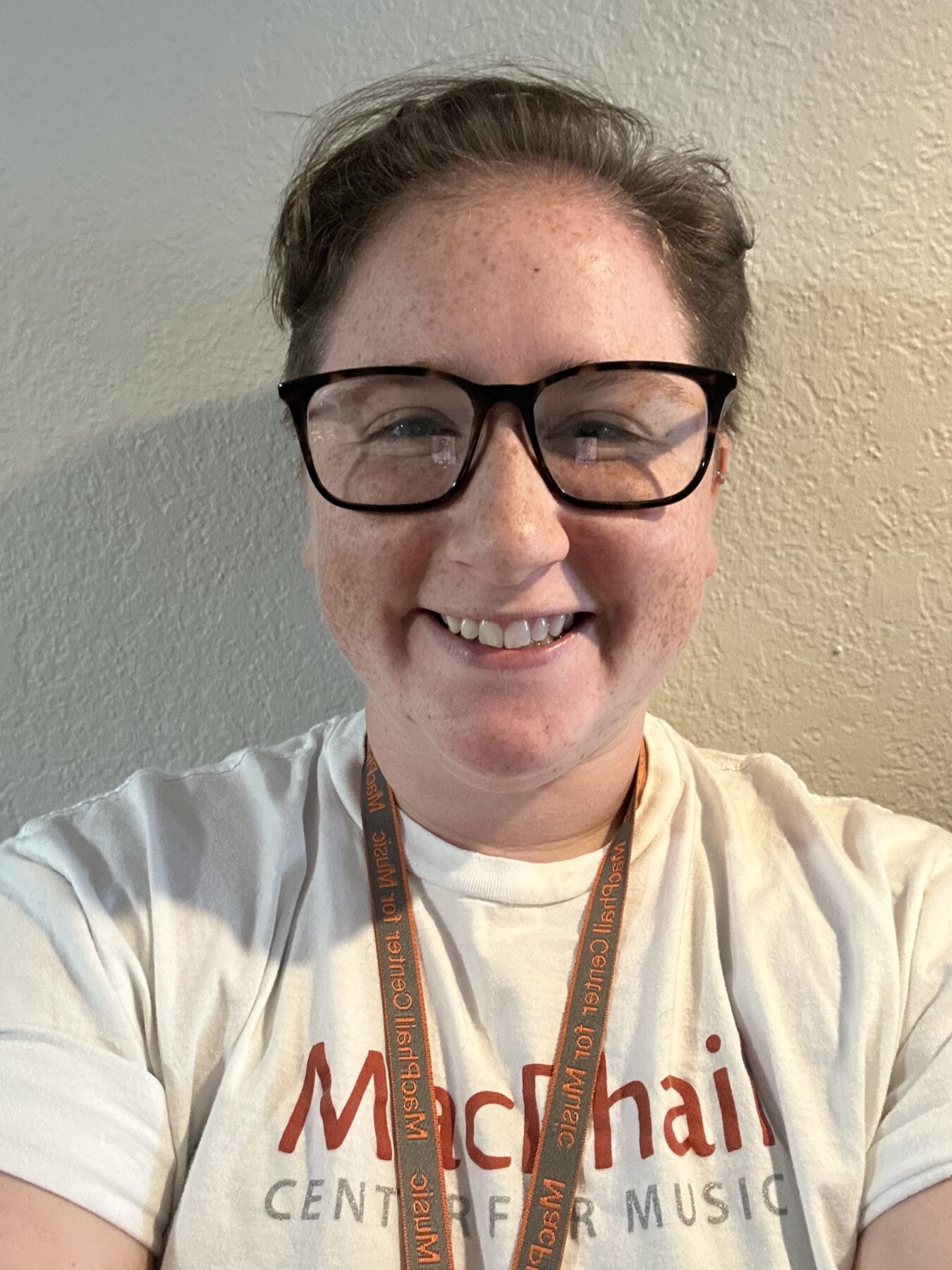Q&A with MacPhail Music Therapist, Molly Fisher
In celebration of Minnesota Music Therapy Week, MacPhail music therapist Molly Fisher shares insights into her career path and the meaningful work of music therapy.
Q: What inspired you to become a music therapist?
A: I’ve always been drawn to the way music connects people—how it can express things words can’t, and how it can comfort, energize, and heal. I wanted a career where I could combine my love of music with helping others, and music therapy felt like the perfect bridge.
Q: How would you explain music therapy to someone who’s never heard of it?
A: Music therapy is the clinical use of music to help people meet non-musical goals. That could mean supporting memory, speech, motor skills, social connections, or emotional expression. It isn’t about teaching someone to “be good at music”—it’s about using music as a tool to meet them where they are and help them grow.
Q: What does a “day in the life” of a music therapist look like?
A: No two days are the same! I might start the morning leading a memory-care group, spend the afternoon with a teenager learning adaptive piano or songwriting, and end the day providing bedside music in a medical setting. In between, I’m planning sessions, writing documentation, collaborating with colleagues, and loading my car with way too many instruments.
Q: What types of clients do you typically work with?
A: I work with a wide range: children and teens with developmental or learning differences, adults with mental health needs, older adults living with dementia, and patients in medical settings. The variety keeps the work deeply meaningful and always evolving.
Q: What instruments do you use most in your sessions?
A: Guitar, piano, and voice are staples, but I also use drums, percussion, ukulele, and digital tools like GarageBand. Sometimes the most powerful “instrument” is simply listening and creating space for a client’s voice.
Q: How do you choose or adapt music based on a client’s needs or goals?
A: I consider their preferences, culture, and history, then match music to their therapeutic goals. For example, I might use steady rhythmic drumming to support attention, or adapt a favorite song by changing the key, tempo, or lyrics so it feels achievable and meaningful.
Q: What are some common misconceptions about music therapy?
A: A big one is that music therapy is “just playing music for people.” In reality, it’s an evidence-based clinical practice delivered by a board-certified professional. Another misconception is that you need to have musical talent to benefit—when in truth, anyone can engage in and benefit from music therapy.
Q: How does music therapy support mental health and emotional well-being?
A: Music provides a safe outlet for emotions, whether through songwriting, improvisation, or listening. It can reduce anxiety, regulate mood, foster self-expression, and help people process experiences they may not have words for.
Q: What’s your favorite part of your job?
A: The moments of connection—when a client lights up, laughs, or feels truly seen through the music. Those sparks of joy and growth are what keep me inspired.
Q: What advice would you give someone considering a career in music therapy?
A: Be ready to embrace flexibility, creativity, and deep empathy. It’s a challenging path, but incredibly rewarding. Shadow a music therapist if you can—you’ll see how different the work looks in practice than on paper.
Q: What does Minnesota Music Therapy Week mean to you?
A: It’s a chance to celebrate and share the impact of music therapy, while also recognizing the hard work of my colleagues across the state. It’s a reminder that this field is growing, and that our community values the healing power of music.
Q: If you could describe the power of music therapy in one sentence, what would it be?
A: Music therapy meets people where words cannot, opening pathways for connection, healing, and growth.
Q: Is there anything you don’t often get the chance to talk about?
A: I wish people knew how creative and adaptive music therapy is. Every session is tailored to each person—sometimes that means writing original songs together, other times it’s making space for silence within the music. It’s not “one-size-fits-all,” and that’s what makes it so powerful.

